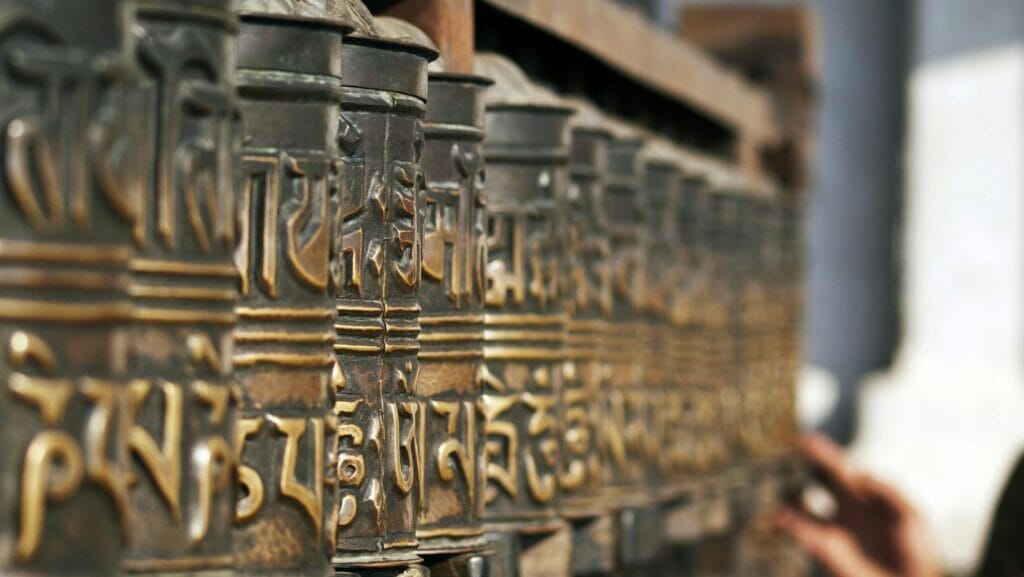
Mantra is a word that is used a lot with the rising popularity of the wellness industry but the truth is that mantras have been around for thousands of years. They are at the base of spiritual and religious practices all around the world, they are utilized to pass down cultural traditions, and are seen as ways to connect with the creative expression of humanity. So, what is a mantra and how might one utilize a mantra on their spiritual journey?
There is no set definition for what a mantra is because there are so many different perceptions. The first mantras were composed in Vedic Sanskrit in India thought to be around 1000 BC. The root of the word, ‘man’, means ‘to think’. A mantra can be a sacred sound, word, group of words, or anything with meaning really. The word ‘Om’ or ‘Aum’ is a mantra in itself as the first and original sound to be made in the Universe. In Hinduism, they actually believe that Om is the ‘pranava mantra’, or the source of all mantra. In Buddhism, they use mantra to encapsulate the meaning of the Buddha’s Dharma. The truth is, each school of thought has its own opinion about the use, structure, and importance of mantras. They can be used to aid in concentration to achieve states of meditation, they can be used as initiation or in the name of celebration. We see mantras in the Rig Veda and Sama Veda.
One of the most well known mantras from the Bhagavad Gita is the Gayatri Mantra. This is a sacred mantra that is meant to represent the underlying connectedness of all things, the atma in all things. It is as follows:
Om Bhur Bhuvaḥ Swaḥ
Tat-savitur Vareñyaṃ
Bhargo Devasya Dheemahi
Dhiyo Yonaḥ Prachodayāt
The general meaning of this mantra is as follows:
We meditate on that most adored, the creator, whose divine light illuminates all realms (physical, mental and spiritual). May this divine light illuminate our intellect.
Gayatri is the mother of the Vedas. She eliminates darkness in our minds by bringing illumination of thoughts. The vedas reference and utilizes the gunas. Gayatri mantra is best chanted during Satva times of day. The day is said to be Satvic from 4am to 8am and 4pm to 8pm. Regular chanting of the Gayatri Mantra is said to improve concentration and learning as well as ease stress and anxiety.
Mantra serves a central role in Tantra Yoga. In Tantra, we see the use of mantra in puja, or worship. Tantric mantras utilize bija, or seed sounds, that represent a specific energy, aspect, or deity. They can be used to call on the deities, or to concentrate one’s mental energy. They are tools of manifestation. You can use mantra to manifest success, prosperity, wellness, and really growth in any area. One might utilize a mantra while cleansing energetically, whether it’s a space or oneself that you are working with.
One might even encounter mantras in general public yoga classes of all kinds, including vinyasa classes. Some yoga teachers feel passionately about the power of mantra and using mantra in asana practice. You might hear one offered at the beginning of class to help keep the student present and mindful. You might also hear one right before savasana as the student heads into restful integration. Mantra can be many things from telling a story to connecting to the divine power and deities of one’s belief system. Ultimately, they are a powerful expression of intention, emotion, and connection. One can learn more about the use of mantra in personal practice and ancient sacred spiritual practices through teacher training such as My Vinyasa Practice’s 200-hour Tantra Teacher Training.
